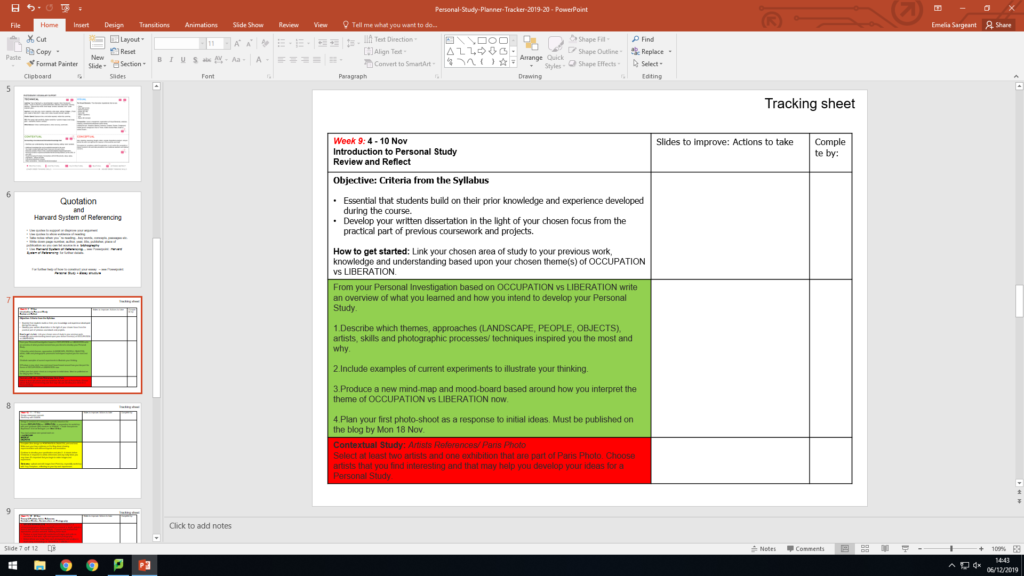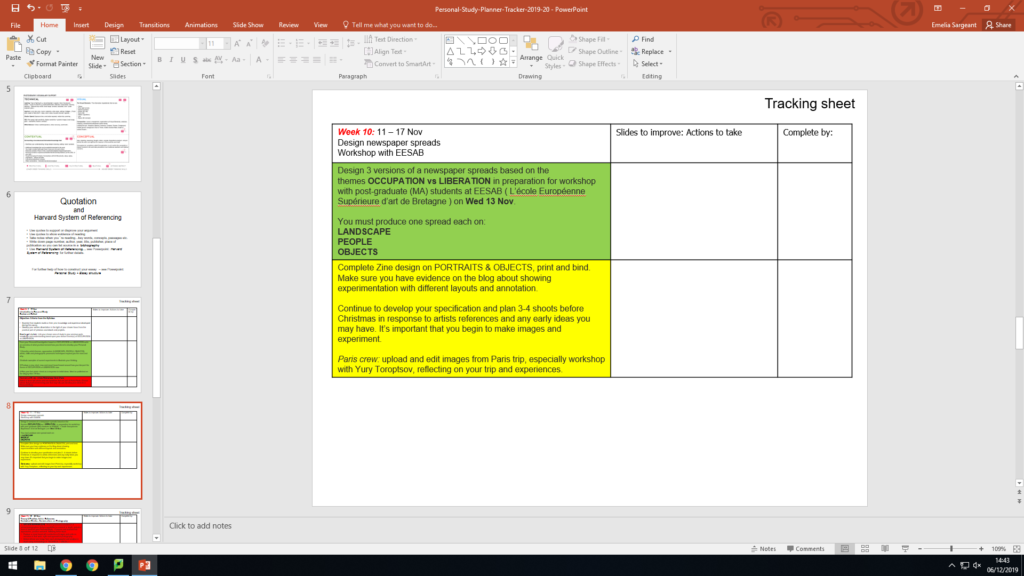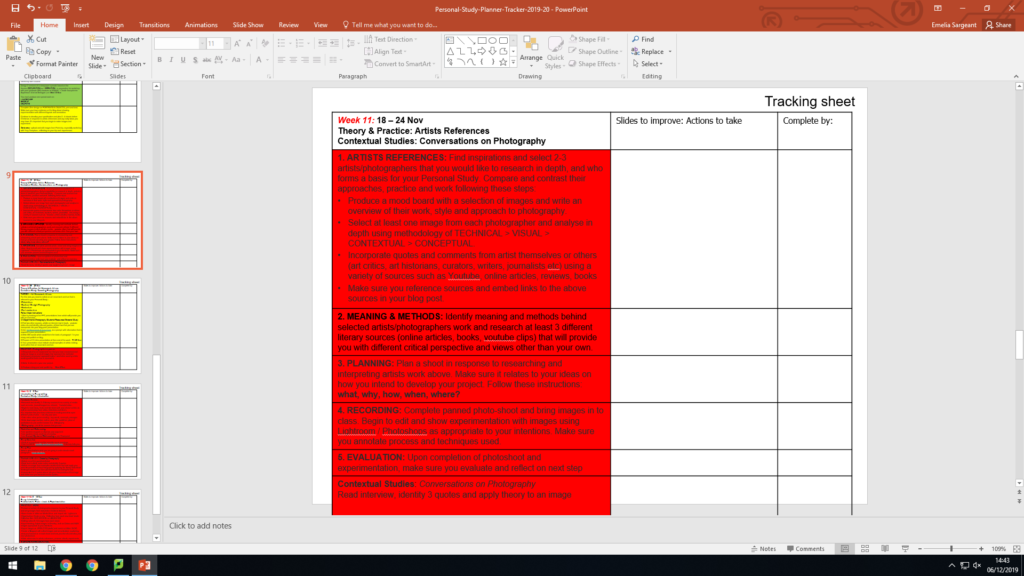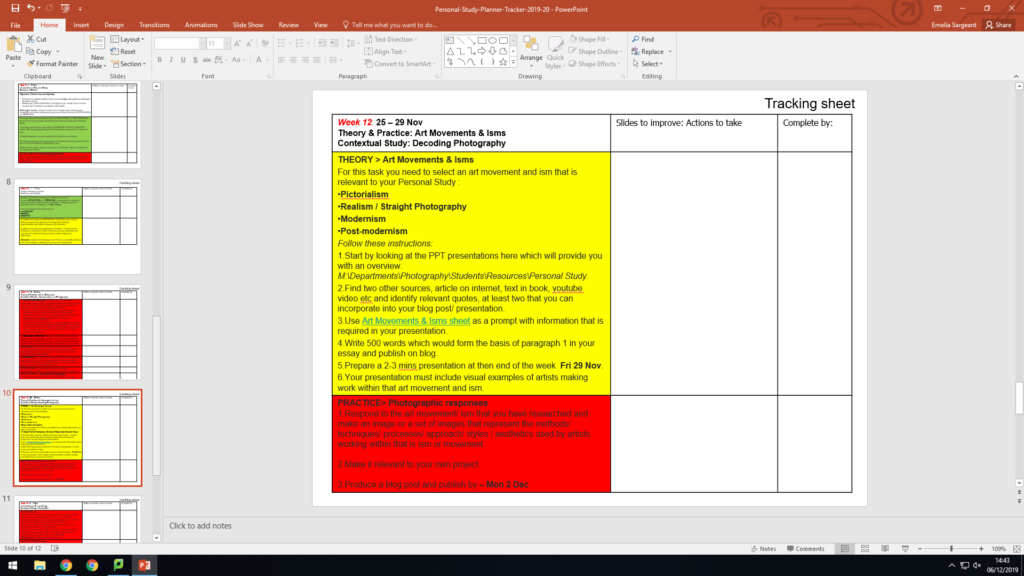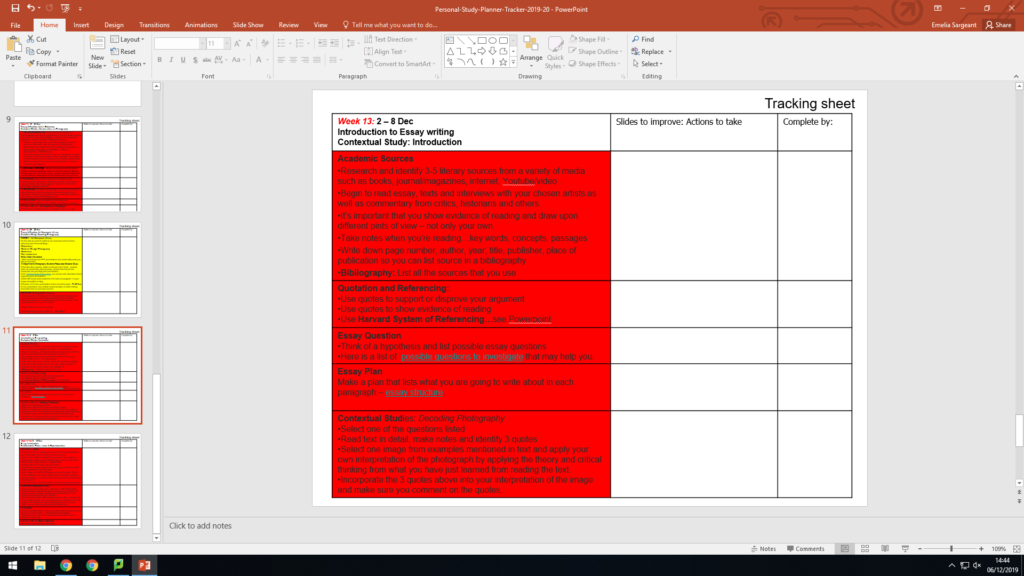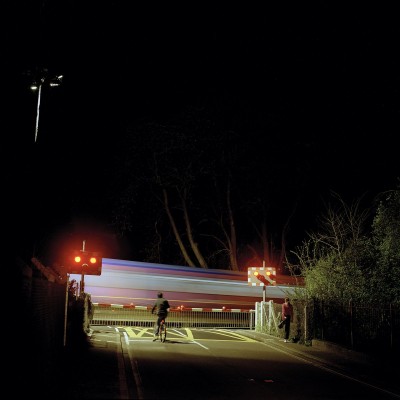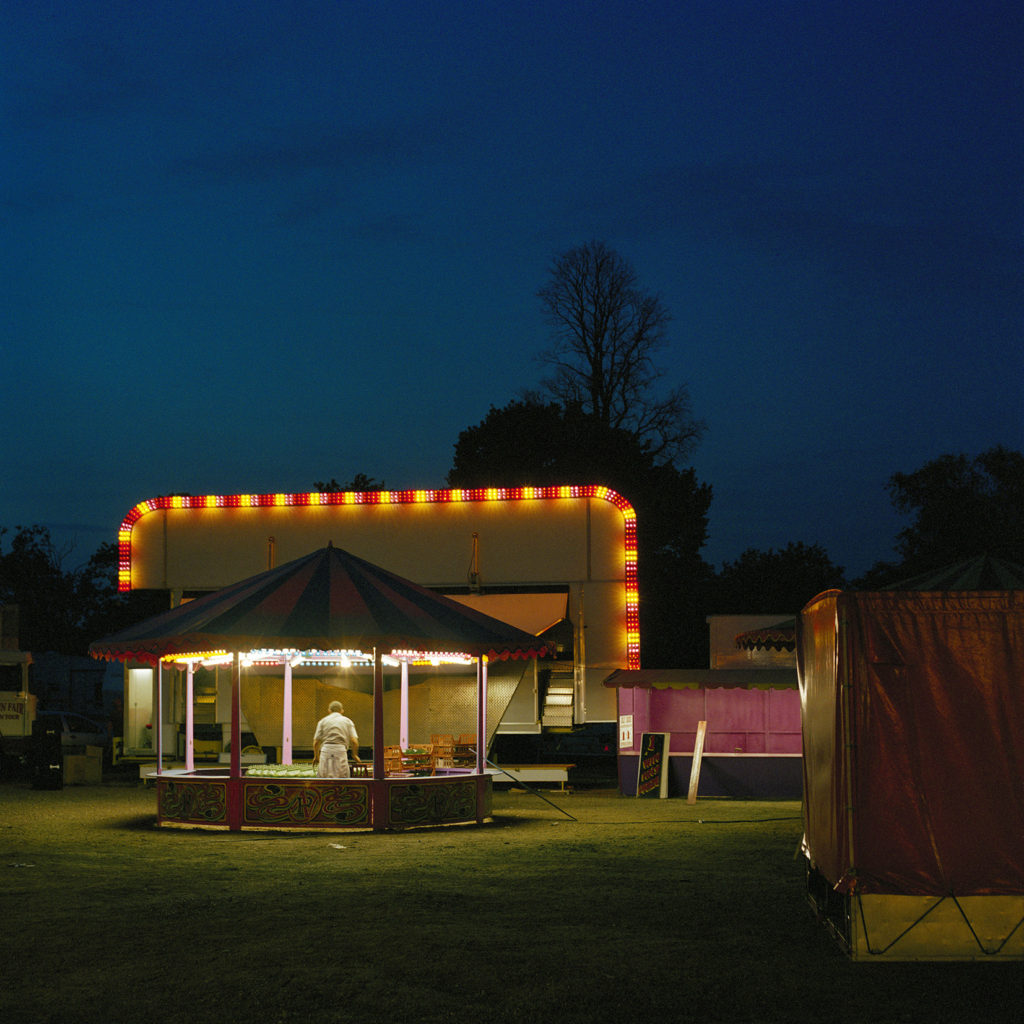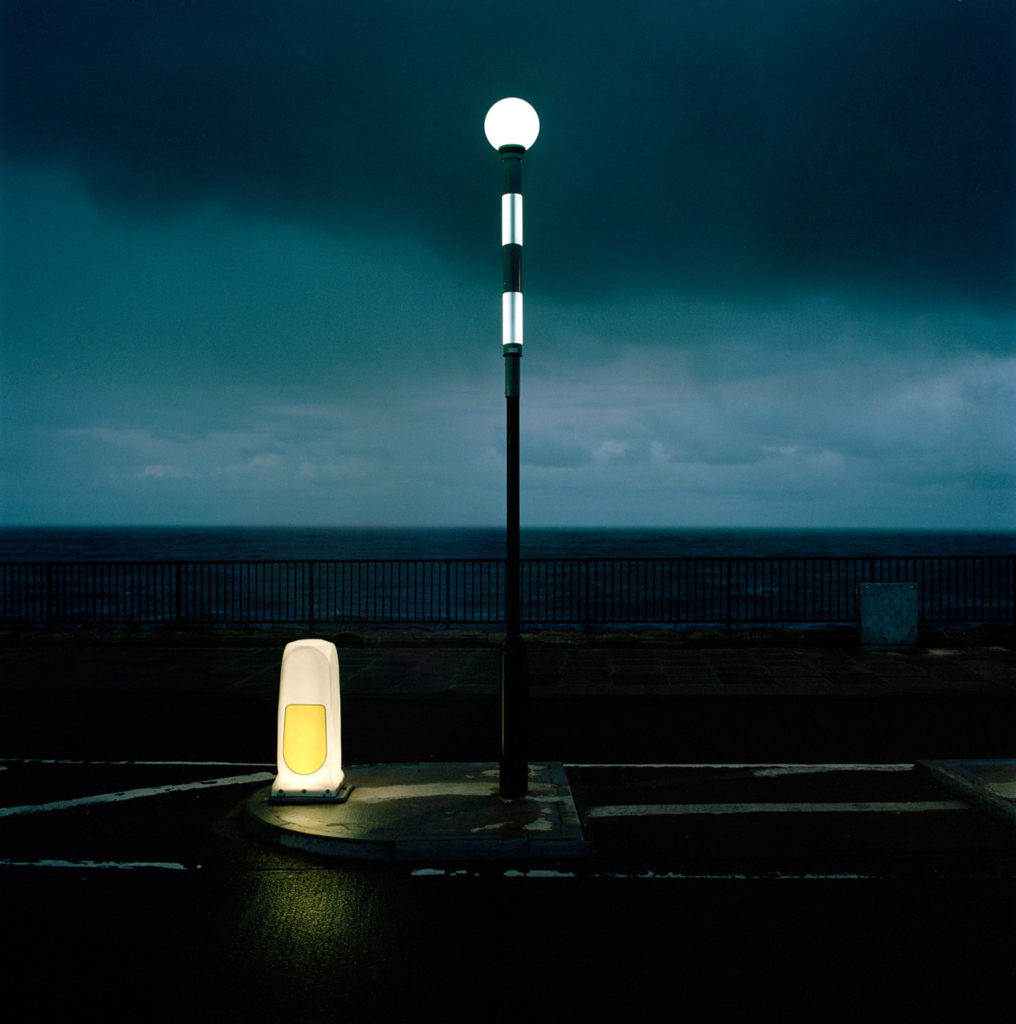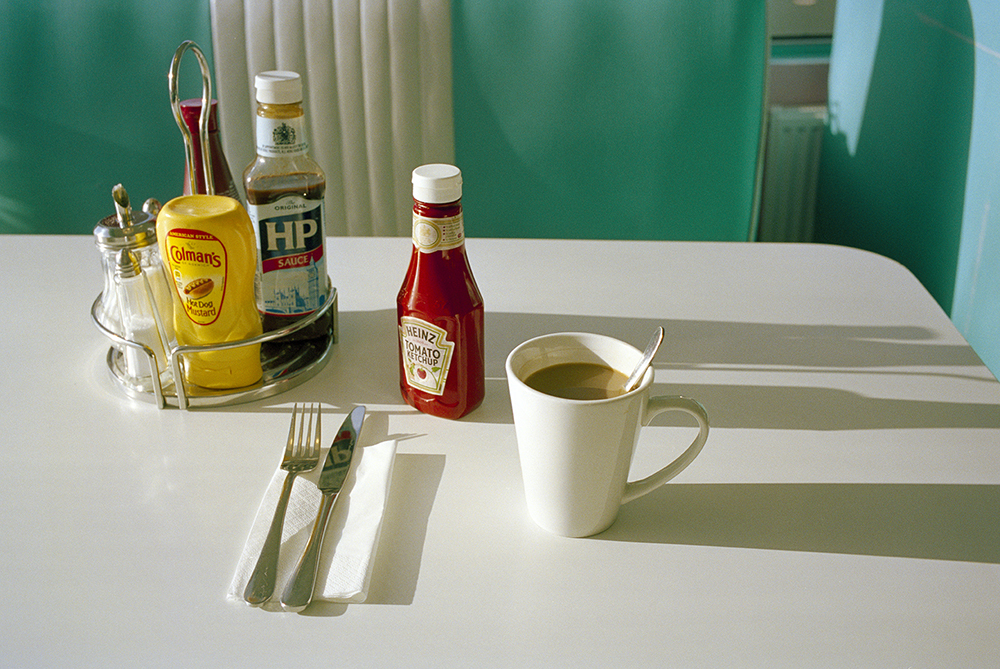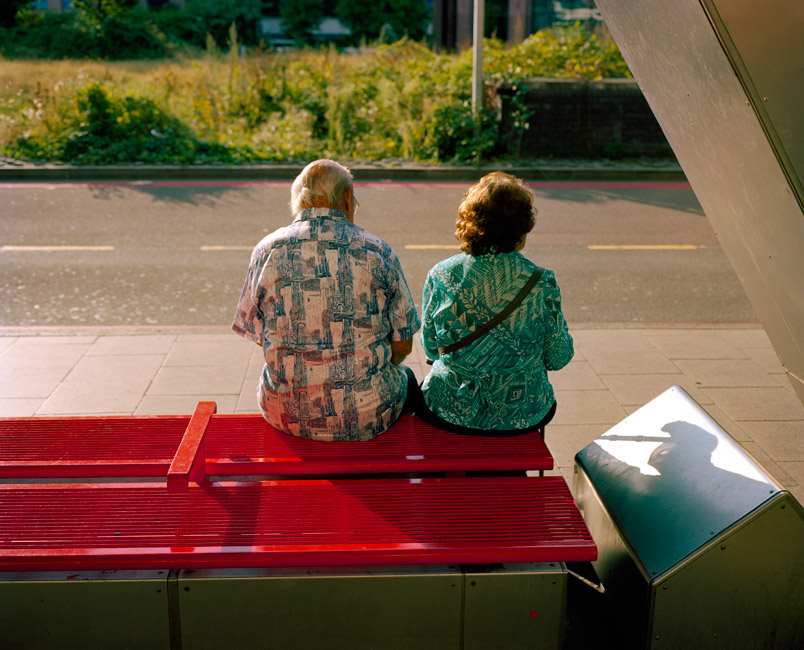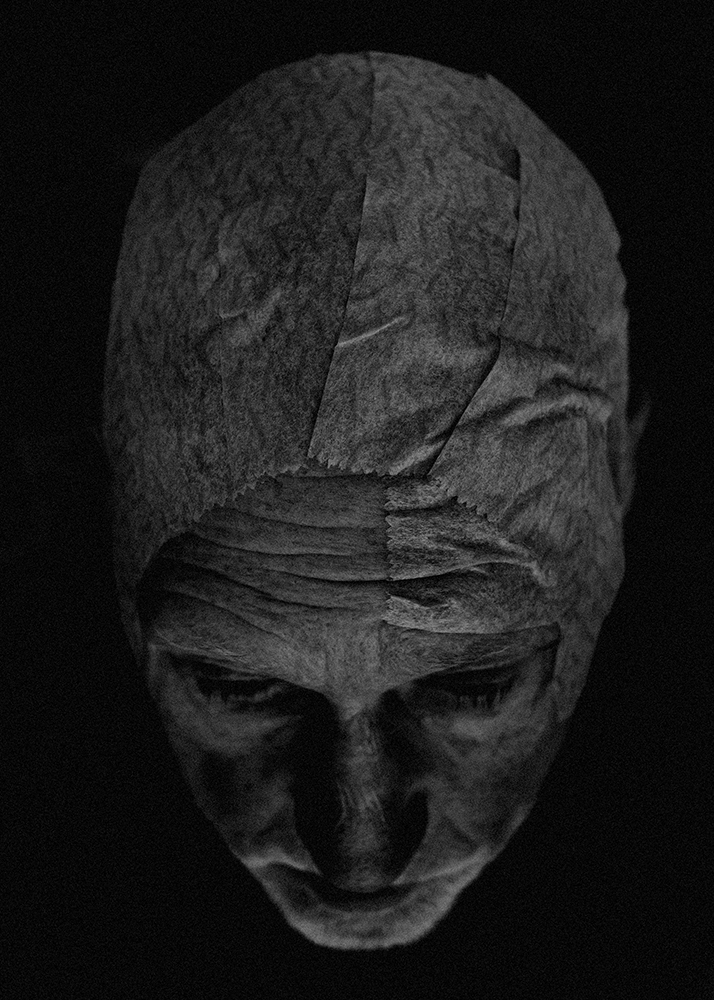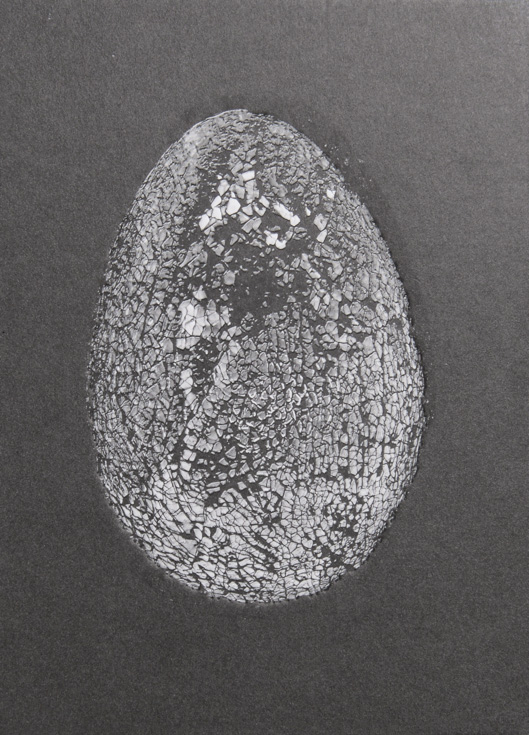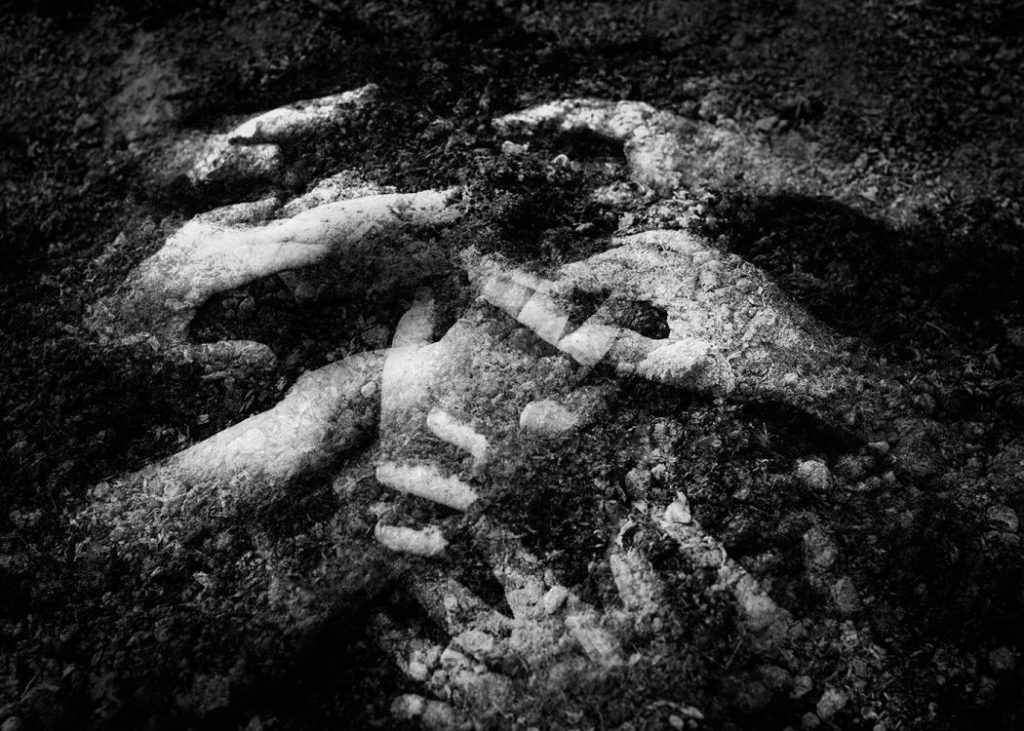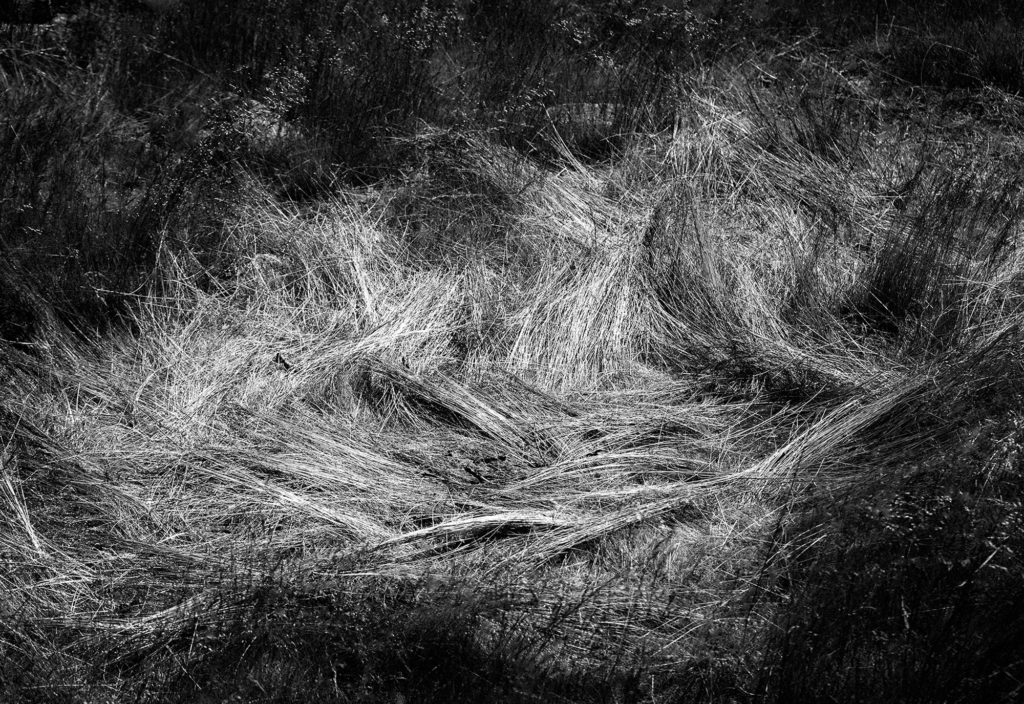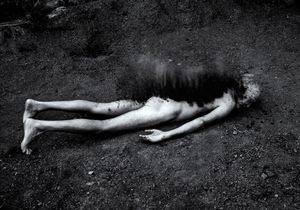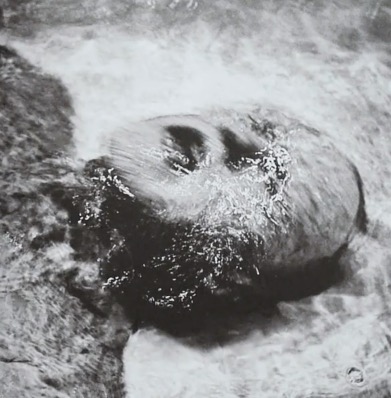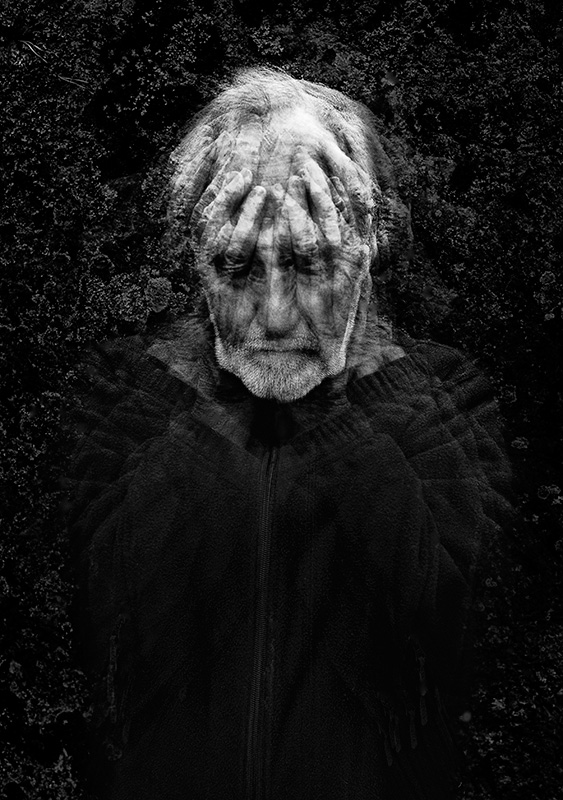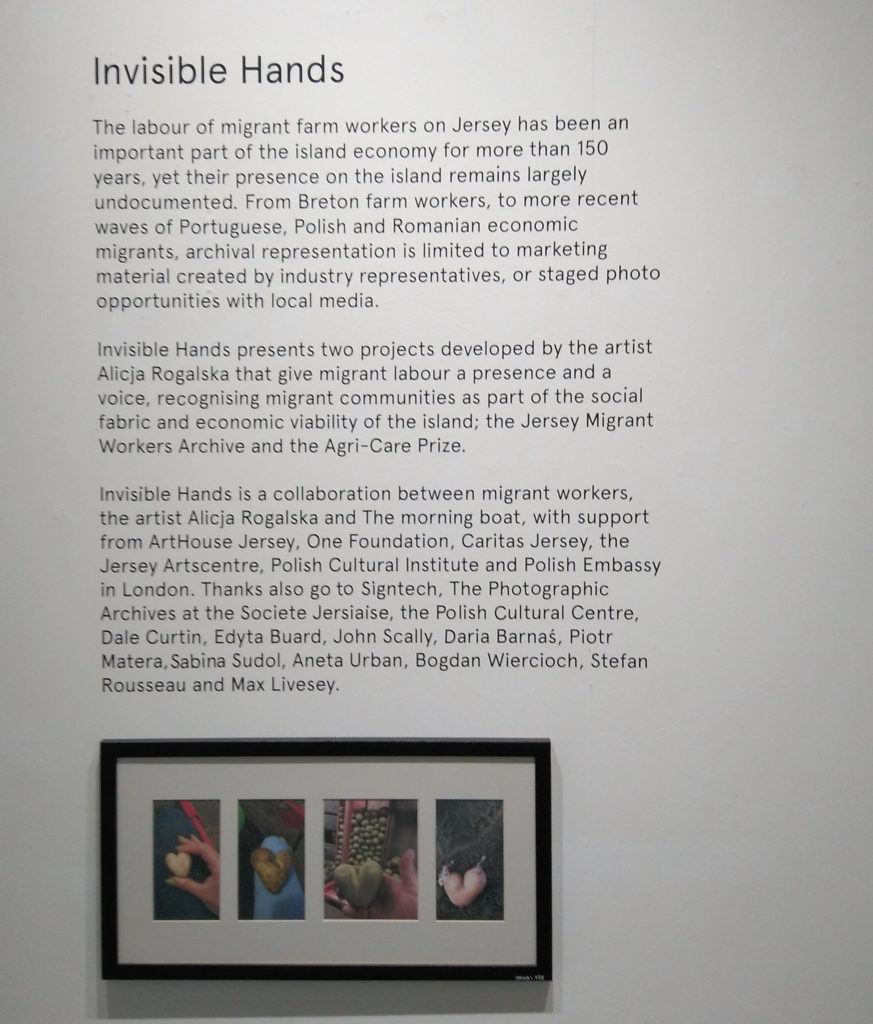My personal study will focus on mental illness and the different areas that it can affect, such as; education, home life, work, whilst also capturing the different 'levels' in a sense, from somewhat mild emotional distress, to more severe issues that sometimes require hospitalisation. Throughout this project I am going to investigate how not only the effects of mental illness affect the sufferer, but also how they are portrayed to the people surrounding them. I feel that this fits the stimulus of 'Occupation v Liberation' as people can often be overtaken by these illnesses, but CAN be 'liberated' through recovery, likewise they could be occupied by the stigma of mental illness, more than the illness it self. The reason I chose mental illness as my personal study was based on my own journey with it. I have spent over two and a half years known to Jerseys mental health services, and hospitalised numerous times, but despite this, between age 15, and my 18th birthday, the 17th August 2019, I had gained a childcare qualification, volunteered at 6 different places, worked 5 different jobs and made it through my first a level year. Recovery was made a very real possibility. Liberation. During this I am going to use a mixture of self portraits, both on my own and including some of the people closest to me, and old archival imagery to show the progression of time, and how long, and how hard, this 'occupation' is. In order to do this so that I too am in the image I am going to have to put my camera on to the self timer setting, adjusting the shutter speed and iso to the type of lighting i am using, and how bright it is. I am also going to try to take inspiration from Francesca Woodman and manipulate my images to try to convey emotional state. However, due to the subject of mental health, and mental illness being extremely sensitive subjects I am going to have to ensure that with every photoshoot, and every justification of my images, I keep to the forefront of my mind that there is an extremely thin line between representative and offensive.
Monthly Archives: December 2019
Filters
Artist REFERENCES
Niall McDiarmid:
Niall McDiarmid’s use of vibrant colour in some photos, in direct contrast to the lack of colour in others tells a very interesting story. Combine this with clear shapes and an incredibly effective use of shadows, and the result is images with a real sense of both abstraction and realism at the same time. McDiarmid primarily focuses on documenting the people and places of the UK. McDiarmid said in an interview with Wobneb Magazine, “I didn’t have the intention of using colours as a base for the work. However after a few weeks, I realized that it was something I had an eye for.”
Image Analysis:
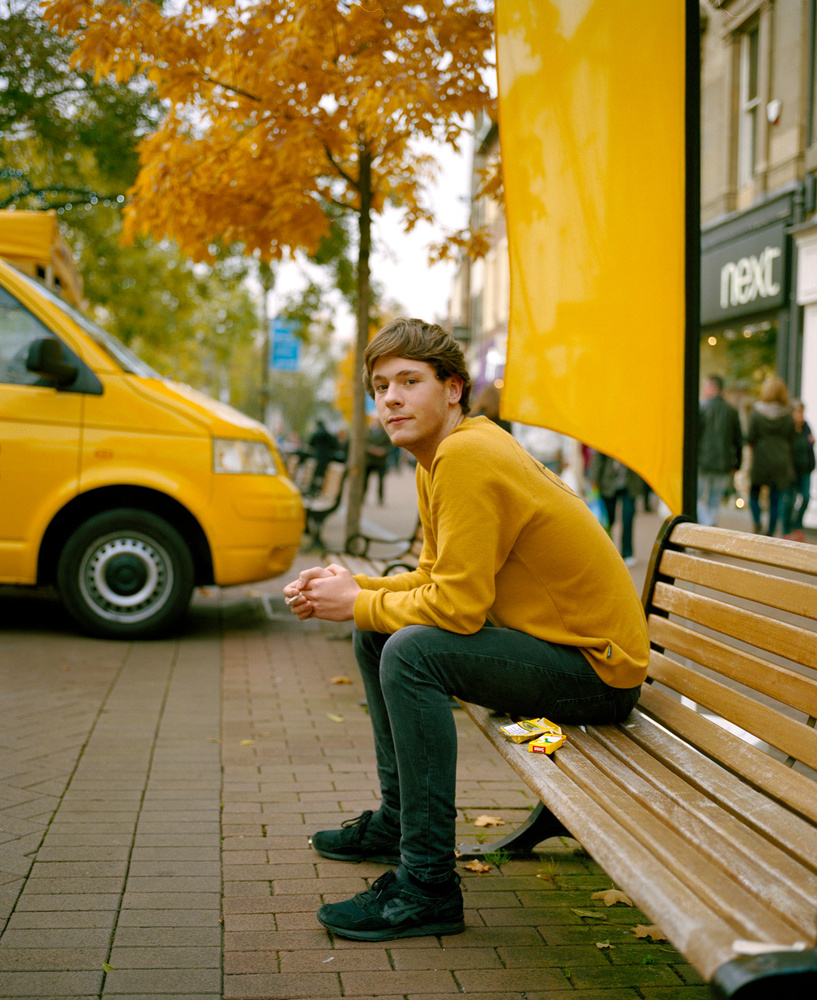
McDiarmid’s has said in the past that colour is a very influential part of his photographs, and that basing his images around shapes and colours influence his style of photography. This is especially evident in my chosen photograph, as it ties shapes and colours together very well. All of the vibrant colours play on one another, and even though the yellows are slightly different shades, there is enough similarity to tie the whole image together. For instance, even though the trees are not completely yellow, the autumnal oranges in the trees make the image seem much more complete, as the way the image has been composed to feature a yellow/orange detail in the top, bottom, left and right of the image. It is clear that McDiarmid as meticulously thought about the composition of his shot, even down to the yellow packet of cigarettes next to the subject. This is more evident when you consider the way the image makes you look at the subjects face using the leading lines in a slightly more abstract way through colour, drawing the viewers eye to the center of the image, with the yellow items around him acting like arrows pointing at the face of the subject.
leif sandberg
Leif Sandberg lives in Stockholm, Sweden and work as an art photographer. His photography have been showed in several exhibitions, at Gallery Ralf, Landskrona Fotofestival and Fotografiska, Stockholm. The first book Ending (2017) dealt with panic and getting old and the latest book, Beyond the Mirror (2018), continues where Ending ends and moves into unknown territories. His photography is self reflective and explores ones inner self and is open for interpretations by the viewer. He has studied Art, History & Art Philosophy at the Stockholm University and participated in workshops with Anders Petersen, JH Engström, Margot Wallard, Antoine D’Agata and Roger Ballen.
Image Analysis:
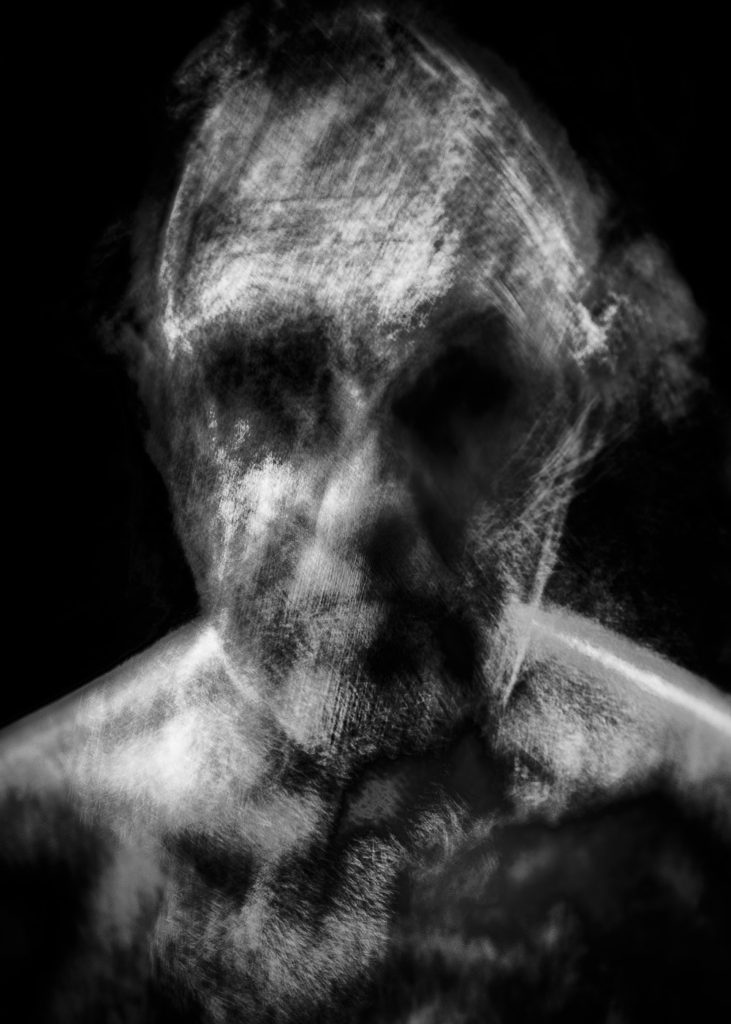
Sandberg’s Image definitely follows in line with his style and recurring themes of reflection self-exploration. Here he uses a slow shutter speed combined with multiple exposures to create a ghostly reinterpretation of himself. This technique is very effective in creating the high contrast, low key atmosphere that Sandberg is known for. The way that Sandberg has used lighting to create the dark shadows over his eyes also adds to the idea of aging and the thoughts that surround it, making the subject look decayed and rotting. However, this technique also slightly dehumanizes the subject (Something that I think Sandberg has done intentionally) to show that this could be anyone, and shows the inevitability of death, similar to that of Vanitas still-life paintings of 17th century. Sandberg’s images feature many elements of surrealism, which is especially clear, especially in this image which Sandberg named “Before Take Off”, and is part of a collection which Sandberg made into his first book called “Beyond The Mirror”. He has since made another book which continued the themes of aging, death and self-reflection called “Ending”. Sandberg’s concepts around the inevitability of death, futility of life and the unwavering nature of aging are all shown in this one specific image. It’s surrealist nature makes it eerily unsettling to observe, and to me represents how people can still be ghosts without necessarily dying, which only strengthens his concepts mentioned earlier.
Invisable Hands Exhibition

At the Jersey Arts Centre there was a recent show of the exhibition “Invisable Hands” by Alicja Rogalska. The exhibition is known as being associated with migrant workers as well as The Morning Boat whilst it tries to show Jersey through the perspective of migrant workers. This has shown to be important due to migrant workers being a large part but not being known much about due to the lack of knowledge on the past.
Looking through this exhibition allowed main parts in the agriculture sector in Jersey to be seen which has proven to needing to be more attention due to its importance with the living/ working conditions which people experience everyday and which most middle class people would be appalled by if they saw and if they were educated. Looking through, I liked how Rogalska captured the images as it allowed for a clearer concept to be shown as well allowing more emotion. She also has a video playing which explored the visuals of context towards the images as well as adding emotion which images cannot do in some cases. The video also allowed for us to use more senses such as listening adding a personal effect. The highlights allowed to show the importance of being aware of your surroundings, as well as knowledgeable as to what other go through and how they live which I found was very effective.
Carrying on with the subject of videos, a video was played at the exhibition which was taken of migrant workers in creating clay figures, the most well recognised being a potato which represents their culture as well as helping to symbolise what they do. In order to create the video, the workers were interviewed which was also put into the video where we could see them creating the potatoes out of slay along with the way in which they do it. The title of ‘Invisable Hands’ is shown clearly as we can see that their faces are not shown in the video, only the actions they are doing with their hands.
As seen from the images above the images have been taken in poor quality helping to images to have an interesting back story as it could be possible that they are self taken images, explaining the low level of technique in the actual images.
My personal opinion on this exhibition is that it successfully shows viewers the true aspects of being a migrant worker through both their living and working conditions reflecting social as well as political issues with our government. The use of both imagery and media helps for viewers to gain understanding of the overall concept.
Carolle Benitah
https://www.lensculture.com/cbenitah
French photographer Carolle Benitah uses beads, coloured thread and scissors in order to alter her family photo albums to explore her memories during childhood as a way to understand her current identity. Benitah became interested in her family pictures when she looked through a family album and found herself “overwhelmed by an emotion”. She explains that the photographs represented “me, spoke about me and my family, told things about my identity, my place in the world, my family history and its secrets, the fears that constructed me, and many other things that contributed to who I am today”.
The artist says that she “excavated” images in which she appears from family albums and chose snapshots that relate to memories and loss. Benitah carried out a process of order, classification, scanning and then printing. She never manipulates the original photo. Once the images are chosen, she starts to tell her version of the story. Benitah explains that “The past of a human being, is neither permanent or finished, but reconstructed in the present time”. I find it interesting how Benitah doesn’t do anything directly on the original image. If you manipulate the original then it would be changed forever. However, there is some sort of dedication that comes when adjusting the original since you are essentially rewriting your past and making a statement.
For the last step she adds needlework. Embroidery is strongly linked to the environment in which she grew up in. She uses embroidery with a purpose, a decorative function to re-interpret her own history. “With each stitch I make a hole with a needle. Each hole is putting a death of my demons. It’s like an exorcism. I make holes in paper untilI am not hurting any more.”
I selected Benitah as one of my references because of the visual aspects portrayed in her work. For my own personal investigation, I would like to manipulate and physically edit my archival imagery through artistic techniques, whether that may be sewing, drawing or cutting.
She demonstrates her feelings towards her childhood from her current perspective, which is what I intend to do in my own project. Through artistic techniques, I want to portray how grateful I am to have lived in various countries. It has allowed me to gain cultural knowledge, new experiences and memories.
By manipulating my archival images, I want to demonstrate how memories slowly fade away in the passage of time. Revisiting my childhood images will help me to recall the moments in which the photographs were taken. The red illustrations will be symbolic of me leaving behind my traces in each country.
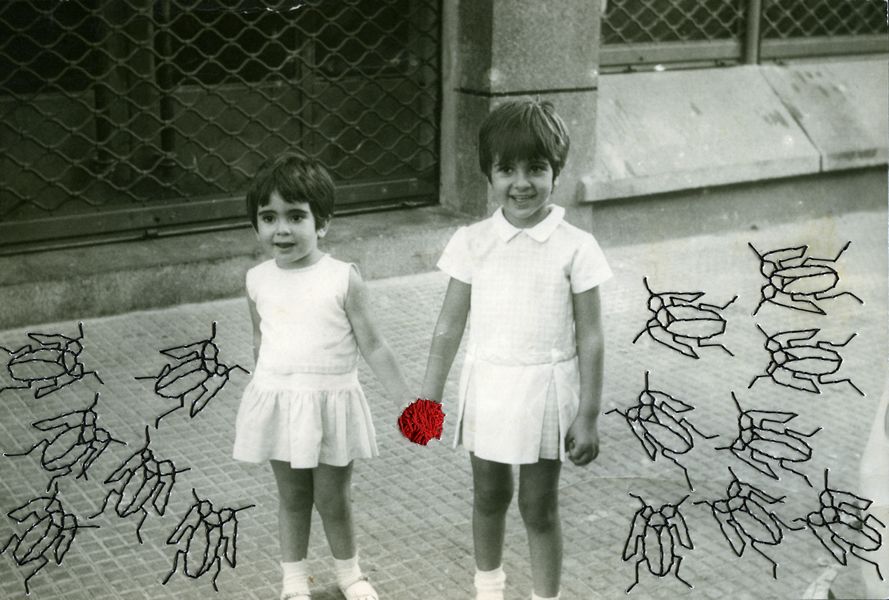
Carolle Benitah has embroidered red thread where both children have linked hands together. This area is the main visual element of the image since it is the only colour feature in the entire frame. As viewers, we know they are related because of the red string bounding their hands together. Their connection cannot be broken. The children are surrounded by large embroidered cockroaches leaving the viewer puzzled since we do not understand the context behind this piece. What I like about this image is that it’s completely up to the viewer’s interpretation. It doesn’t really make any sense because the concept is not personal to us but is for the artist. She has simply illustrated her ideas and how she views the moment that has been captured.
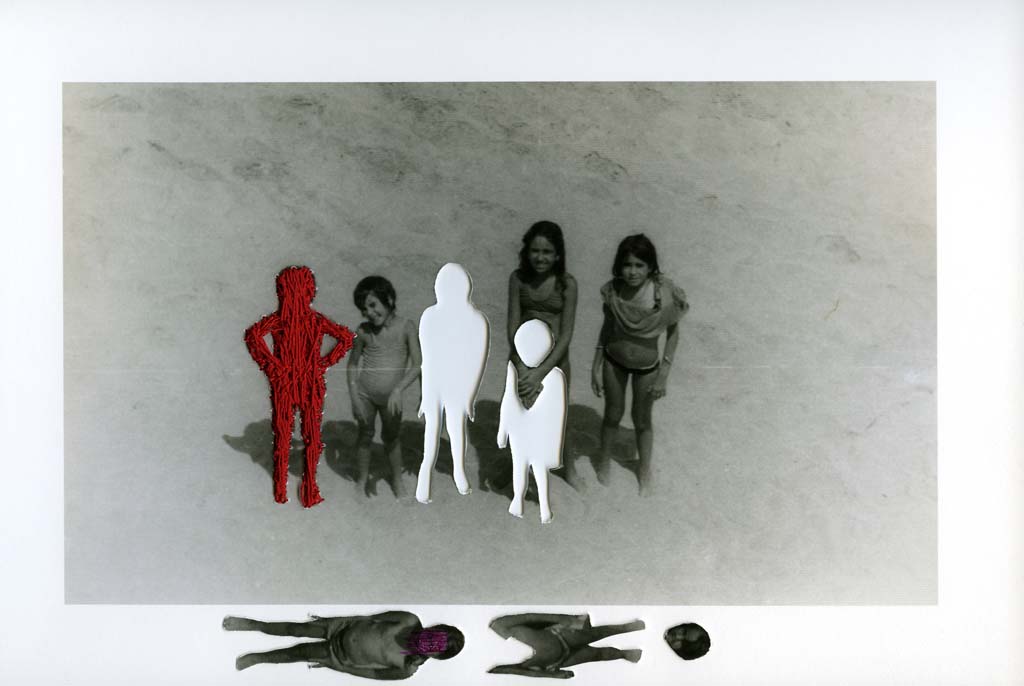
This is one of Benitah’s photography works where she has physically cut out and removed 2 figures. What intrigues me is that she hasn’t abandoned the figures, she has included them outside of the frame. Perhaps it is a metaphor for their lost connection with Benitah in present day. This is another piece where we as viewer’s don’t fully understand the context behind the photograph. The child on the left hand side has been covered in red thread, leaving only an outline of who was once there. This element contrasts with the remaining black and white subjects, highlighting its significance. Perhaps the missing figures are symbolic of her childhood memories slowly being erased.
Artist Reference – yury Toroptsov
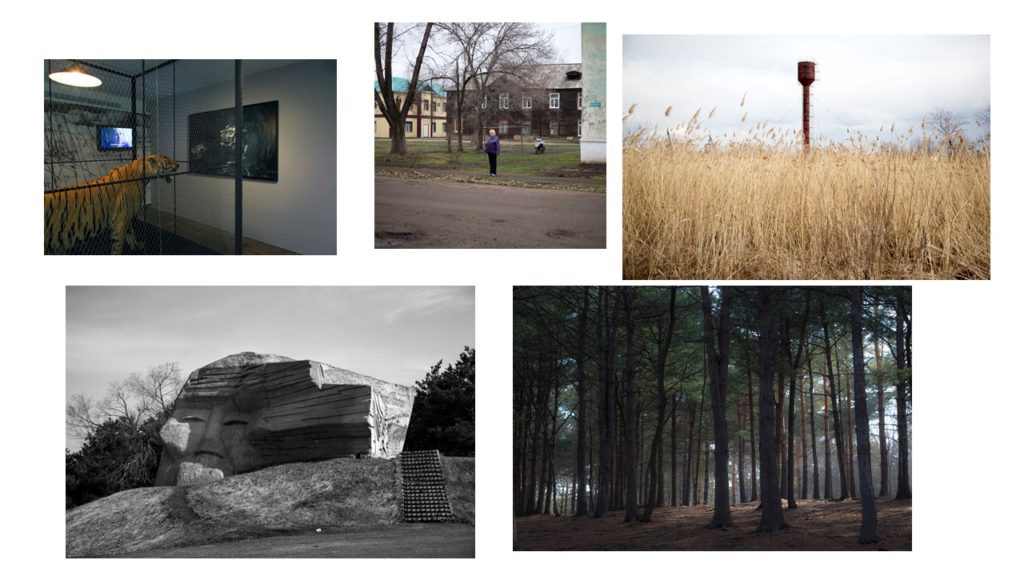
The images above are all from Yury Toroptsov’s project called “Deleted Scene”. Toroptsov took a lot of these images in Russia, where his father lived and died.
The image below is from one of Toroptsov’s books and is one of my favourite of his images.
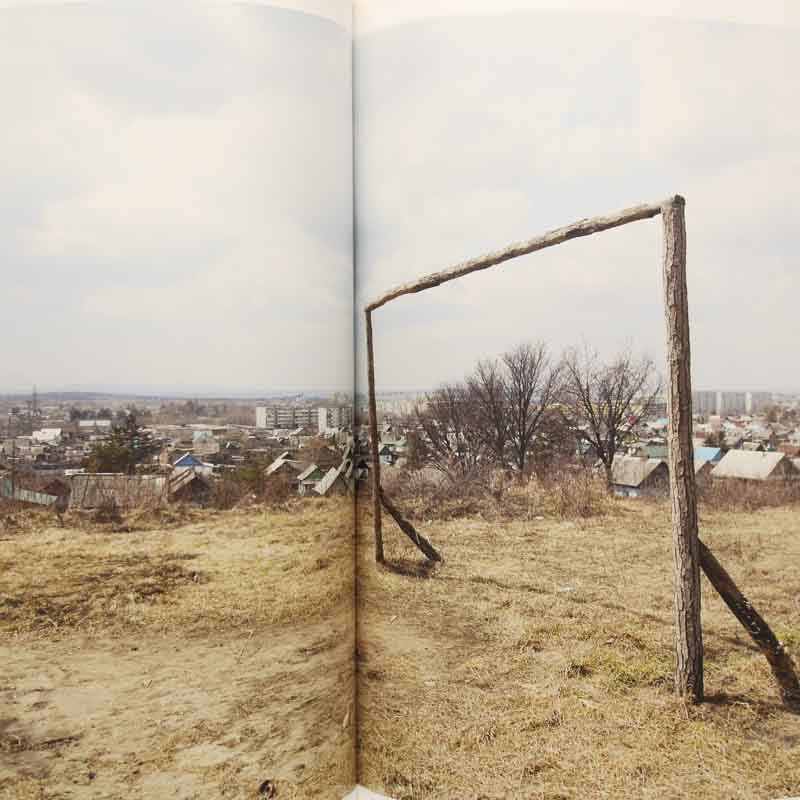
Technical: This image uses natural lighting, during the day time to create a natural looking image of lots of derelict housing. The image also shows lots of clouds above which creates a sad and dull atmosphere within the image.
Visual: The image is made up of a lot of brown and grey colours. These colours are used to show how broken-down and old this area is after years since he was there. It shows that the area has either become run-down or was always a very dull place to be.
The image also has this idea of space because it shows this 3D area behind the main aspect of the image (the wooden poles) with all these old and similar houses covering the landscape behind.
Contextual: This is apart of Toroptsov’s study on his home town in Russia. During this project he was trying to show areas he knows his father was to show that the memory of him. It shows an old run down area to show how old and derelict the area has become since he lived there.
Conceptual: The idea behind this work was to go back to areas his father had gone to show that him and his family remembers where they lived and how they lived through showing all the old buildings and broken down areas that they their family went to. This image shows how it may have aged and looks older over the years.
Personal investigation
For my personal investigation based around the ideas of Occupation and Liberation, I will be exploring the concept of mental health and mental illness using some ideas of abstraction and modernism as well as elements of street photography/social reform photography.
For my own personal investigation project I wanted to focus on a subject very close to me personally which is mental illness, and more specifically, depression. I find that this fits really well into the idea of occupation/liberation, as it is something that takes a hold of someone, controlling them and cutting them off from the outside, similarly to that of the island during the occupation in WWII. As the idea of mental illness is something that is difficult to see physically, which means that it is much harder to show images which will represent it in the way that I want, as unlike the occupation of jersey which left remnants of bunkers on the island, there are very few ways to tell that anything has happened/is happening inside the head of a person.
However I not only want to create a made up story, but something more personal to me, which is about my own experience, and try to show almost autobiographical elements in a slightly abstract way. The first ideas that come to mind when showing this subject would be something to do with emptiness and Isolation. For instance, I was thinking of using nature to show many of my key points I want to come across for my personal investigation, using lone trees or out of place flowers to show isolation or abandoned buildings to show the concept of being empty.
Mind Map, Specification and Key Questions
I have started by drawing up a mind map on different elements of the occupation and things i associate with them or that spring to mind when i read them.
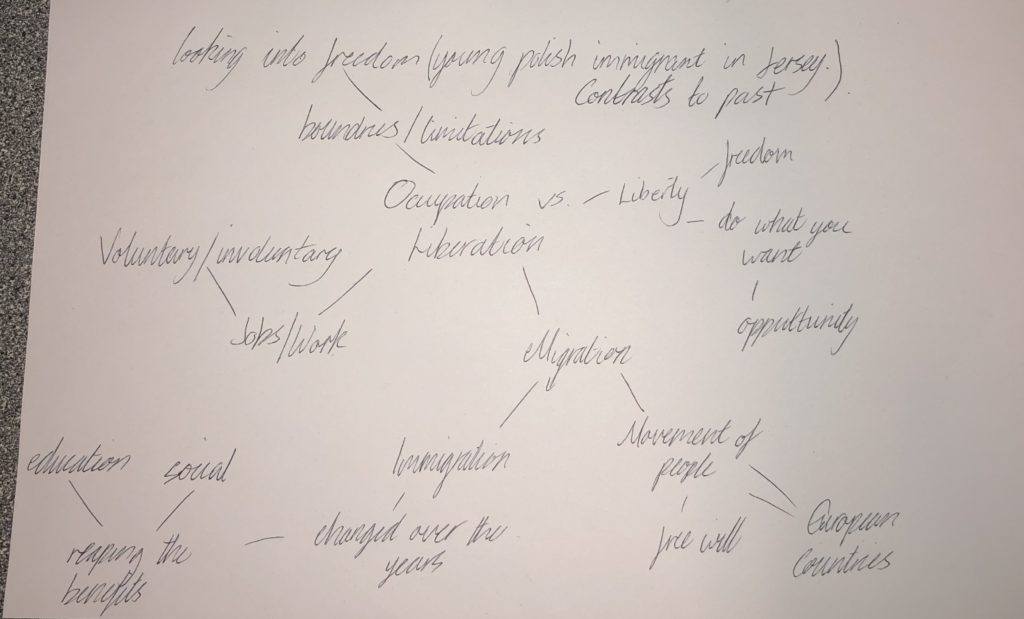
THEME/ISM:
After producing my mind map on areas I interpret as linking to the theme of occupation and mainly liberation, I decided that I would do my product by following the grand theme of the freedom nowadays that people have. The techniques I will use in my project are: Documentary/ Realism and Straight Photography combined with Portraiture. These techniques fit this project well because they will help me to present my work clearly and directly so it is easy to interpret.
MOOD BOARD:

My Statement on Intent/Aim:
My personal study will be revolved around my best friend Max. Max is a 17 year old surfer from Poland who lives with me in Jersey and goes to St. Brelades college to strengthen his English whilst also being given math tutoring with a local teacher. He is of a very wealthy Polish family who carry a high level of class and travel around the world as and when they wish.
My study will therefore be about me exploring the lifestyle of Max and how he counters the stereotypes people may have about polish immigrants on the island whilst demonstrating the extent to which ‘liberation’ has given youth in the modern day to live such luxurious lives and have to freedom to live and explore where they want in the world. I then want to go on to explore further ideas of freedom in relation to liberation and look into the in depth area of travelling.
Towards the end i would like to present my project to show all of the above whilst also being able to create links between both the subject areas whilst also showing where I have taken inspiration from artists such as the two I am looking in to which are Mike Brodie and Theo Gosselin.
Key questions I will be looking into:
- How can photography bear witness to the ways of life or events of the world?
- Does a portrait tell us more about the person portrayed or the photographer?
- Can personality and identity be expressed in a portrait?
- How can photography reflect inner emotions such as fear and isolation?
Tracking Sheet



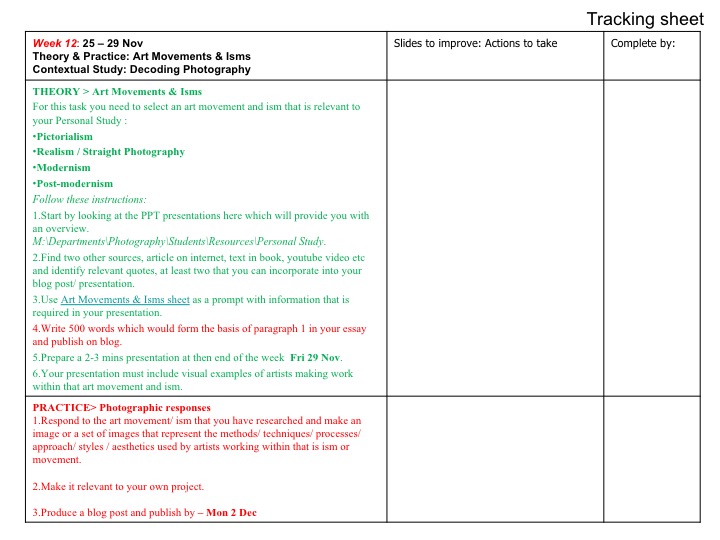
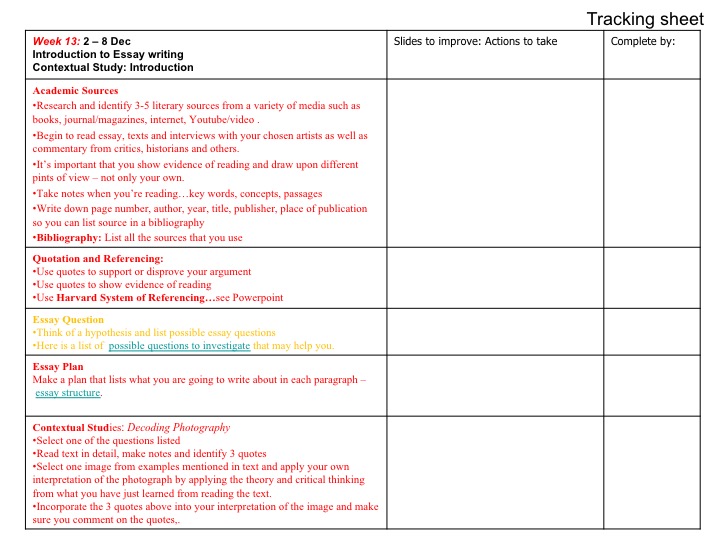

Change in project
I have decided to change my project to focus on the lives of my twin sisters. Twins have a bond that is drastic and can't compare to regular relationships between siblings. My sistersd are also identical twins and people regularly associate them as one person. However, I want to display how they aren't the same person and how although they have many similar chracteristice, they also have numerous differences that make them different characters. Some artists I am considering to look at is Ariko Inaoka as she focuses on the similarities of tins and their intense bond, and fictional photographers such as Vivienne Sassan and Anna Gaskell.

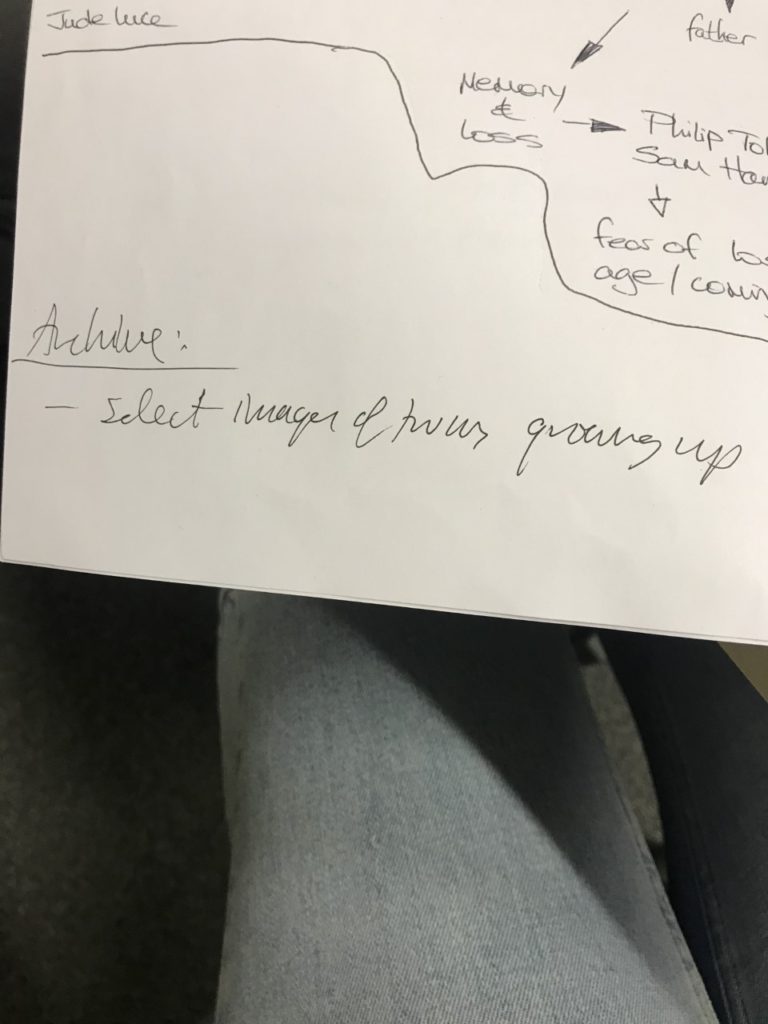
Tracking sheet
